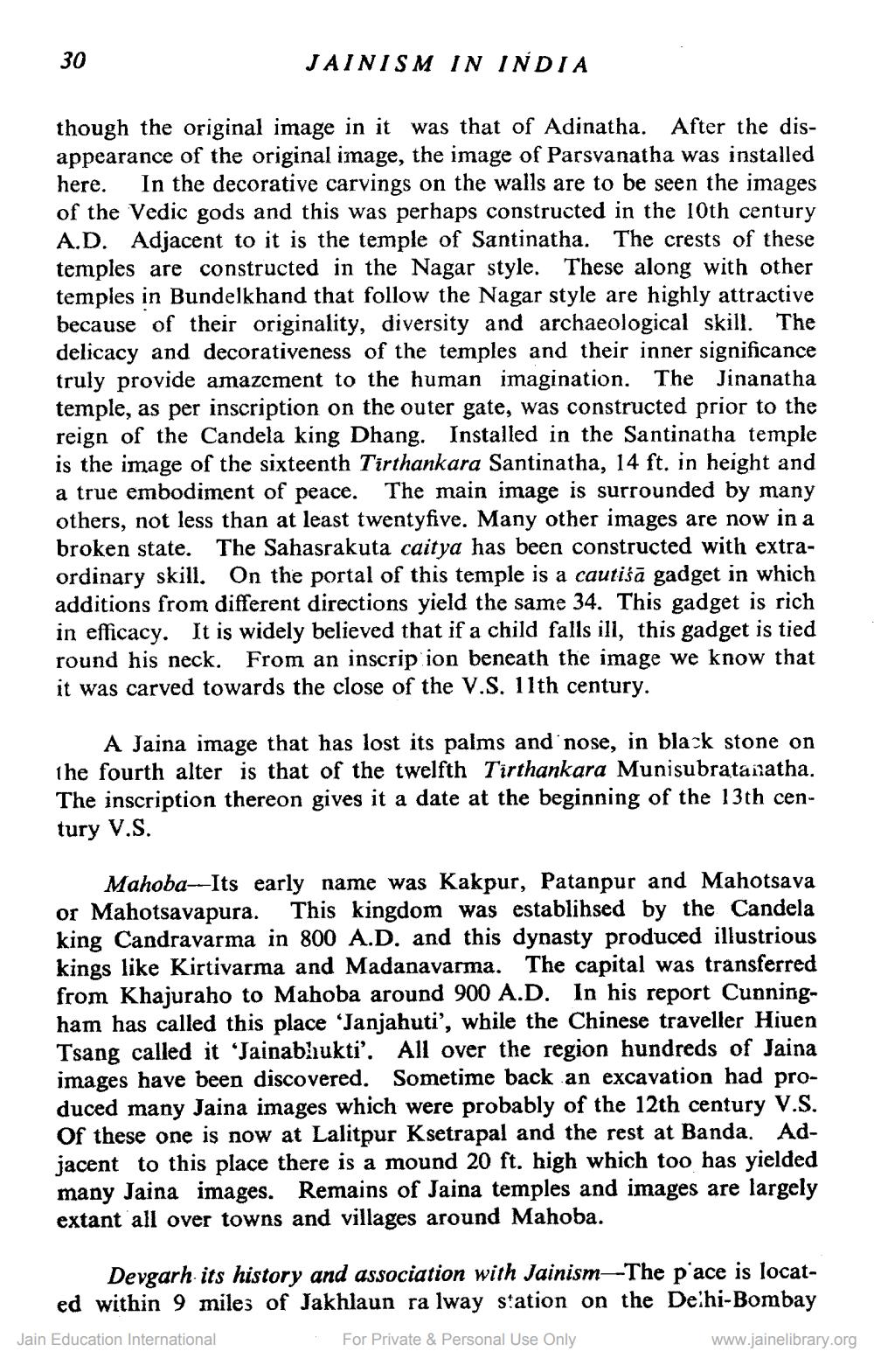________________
30
JAINISM IN INDIA
though the original image in it was that of Adinatha. After the disappearance of the original image, the image of Parsvanatha was installed here. In the decorative carvings on the walls are to be seen the images of the Vedic gods and this was perhaps constructed in the 10th century A.D. Adjacent to it is the temple of Santinatha. The crests of these temples are constructed in the Nagar style. These along with other temples in Bundelkhand that follow the Nagar style are highly attractive because of their originality, diversity and archaeological skill. The delicacy and decorativeness of the temples and their inner significance truly provide amazement to the human imagination. The Jinanatha temple, as per inscription on the outer gate, was constructed prior to the reign of the Candela king Dhang. Installed in the Santinatha temple is the image of the sixteenth Tirthankara Santinatha, 14 ft. in height and a true embodiment of peace. The main image is surrounded by many others, not less than at least twentyfive. Many other images are now in a broken state. The Sahasrakuta caitya has been constructed with extraordinary skill. On the portal of this temple is a cautiśā gadget in which additions from different directions yield the same 34. This gadget is rich in efficacy. It is widely believed that if a child falls ill, this gadget is tied round his neck. From an inscrip ion beneath the image we know that it was carved towards the close of the V.S. 11th century.
A Jaina image that has lost its palms and nose, in black stone on the fourth alter is that of the twelfth Tirthankara Munisubratanatha. The inscription thereon gives it a date at the beginning of the 13th century V.S.
Mahoba-Its early name was Kakpur, Patanpur and Mahotsava or Mahotsavapura. This kingdom was establihsed by the Candela king Candravarma in 800 A.D. and this dynasty produced illustrious kings like Kirtivarma and Madanavarma. The capital was transferred from Khajuraho to Mahoba around 900 A.D. In his report Cunningham has called this place 'Janjahuti', while the Chinese traveller Hiuen Tsang called it 'Jainabhukti'. All over the region hundreds of Jaina images have been discovered. Sometime back an excavation had produced many Jaina images which were probably of the 12th century V.S. Of these one is now at Lalitpur Ksetrapal and the rest at Banda. Adjacent to this place there is a mound 20 ft. high which too has yielded many Jaina images. Remains of Jaina temples and images are largely extant all over towns and villages around Mahoba.
Devgarh its history and association with Jainism-The p'ace is located within 9 miles of Jakhlaun ra lway station on the Delhi-Bombay For Private & Personal Use Only
Jain Education International
www.jainelibrary.org




